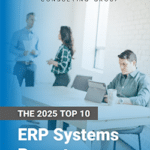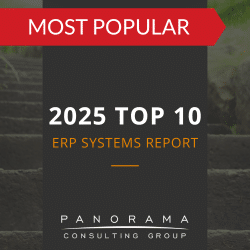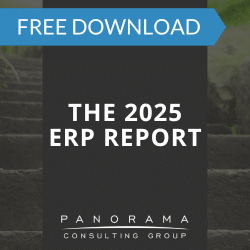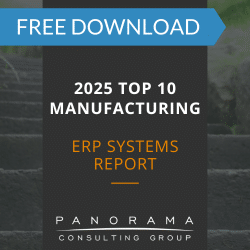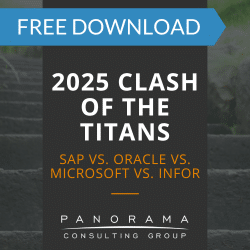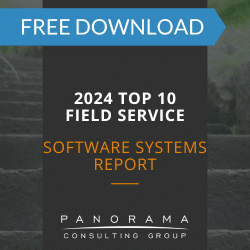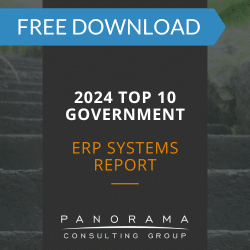- Government ERP replacement is often necessary when legacy systems can’t integrate with modern tools or scale with evolving agency needs.
- Old government ERP systems, like Infor Lawson and SAP ECC, often lack the flexibility to meet today’s public sector demands.
- Successful government ERP modernization requires defining a clear mission and relying on independent guidance instead of vendor-driven agendas.
- Signs it’s time to replace your government ERP system include mounting maintenance costs and a lack of interoperability.
There’s a pervasive belief that ERP systems, especially in the public sector, are too embedded, too customized, and too expensive to replace. That mindset might have worked a decade ago, but in 2025, the opportunity costs of old government ERP systems are too steep to ignore.
For many government organizations, their ERP system was originally implemented decades ago. These systems were groundbreaking in their time, but today, they’re increasingly seen as legacy liabilities.
As public expectations grow and digital service demands accelerate, the discussion around government ERP replacement moves from back-office technical conversations to front-and-center strategic decisions. Let’s talk about when you should take that leap — and what to consider when you do.
The 2025 ERP Report
72.6% of respondents said they've already deployed AI at their organizations. Learn about AI adoption and other ERP trends by downloading our latest report.
Signs it’s Time for an ERP Replacement in Your Government Organization
1. You’ve outgrown your existing technology architecture.
An ERP solution should scale with your organization, both in performance and interoperability. When your system can’t integrate with cloud platforms, modern case management systems, or mobile interfaces, you’re stuck retrofitting modern needs into outdated molds.
2. Your workforce is retiring — and so are the skills needed to run your ERP.
Many older ERP systems require deep institutional knowledge and custom code fluency to operate. As seasoned professionals retire, you face a talent gap that’s hard to fill. If new hires are confused by your interfaces or require months to get up to speed, that’s more than a training issue — it’s a system issue.
3. You’re spending more maintaining the system than improving your processes.
Maintaining an old system often means shoveling money into patches, licensing renewals, and customizations that provide diminishing returns. When you’re spending most of your innovation budget just to stay afloat, you’re less likely to spend it on process improvement.
4. Your ERP isn’t aligned with your mission anymore.
Government agencies evolve. New programs are introduced, service delivery models change, and constituents increasingly expect digital-first experiences. If your ERP system can’t adapt to support those goals — whether through automation, analytics, or self-service portals — it may be holding you back.
5. Your legacy systems lack integration.
Decisions makers need real-time data visibility to plan, budget and respond to citizens effectively. If your legacy systems don’t communicate with one another, you end up with siloed data that impedes decision-making and erodes public trust.
Old Government ERP Systems List
Here are some of the most common legacy systems that our ERP selection consultants have helped government organizations replace:
In Nonprofits:
- Microsoft Great Plains
- Oracle E-Business Suite (EBS)
- SAP ECC
In Local Governments:
- CentralSquare (Naviline H5, AS400, Lucity)
- JD Edwards (older versions)
- Kronos (legacy versions)
- Accela (legacy versions)
- Spillman Technologies
- TriTech (older versions)
- Laserfiche (unconfigured)
- FileNet
- Cityworks (legacy)
In Utilities:
- Infor Lawson
- AS400-based custom tools
- Naviline
- Tyler Technologies (Incode)
These are just a few examples. In most cases, these systems are either sunsetting or no longer meet industry standards. This limits your ability to respond to emerging citizen needs and puts your agency at risk of operational delays, security vulnerabilities, and rising total cost of ownership.
How to Succeed at Government ERP Modernization
Here are four best practices we typically recommend for ERP modernization in the public sector:
1. Start with the “why”.
Whether it’s increasing service equity or improving budget agility, tie ERP decisions to the outcomes your constituents care about. A well-defined “why” becomes your filter when the project scope starts to sprawl. It tells you which customizations to avoid, which workflows to retire, and where to say no — all critical to keeping ERP modernization on track and on budget.
2. Make independence a cornerstone of your selection process.
Too many government ERP projects are steered by vendor-led roadmaps or consulting partners with financial incentives to push a specific platform. Unbiased ERP selection — led by independent advisors — is the best way to ensure your needs, not someone else’s quota, shape the outcome.
3. Commit to transparent communication.
Technology projects in government often fail due to cultural resistance, not code errors. Communicate with employees frequently, and with transparency. When your team sees the vision — and how they fit into it — the transition becomes smoother and the results more sustainable.
4. Prioritize cybersecurity resilience.
A government ERP modernization strategy isn’t complete without a strong cybersecurity foundation. Modern ERP systems often have features like real-time threat detection and zero-trust security, enabling you to protect your agency’s credibility and keep critical services running.
Learn More About Government ERP Replacement
ERP replacements in government are often dismissed as too risky and too expensive, but clinging to outdated systems is riskier still. Leaders who want to build resilient, future-ready institutions can’t afford to wait until the cracks become chasms.
It’s time for an ERP replacement when your systems are out of sync with your mission and system maintenance has overtaken your capacity for innovation. Our independent ERP consultants can help you modernize your ERP system and position your agency to lead in a digital-first world. Contact us to learn more.
